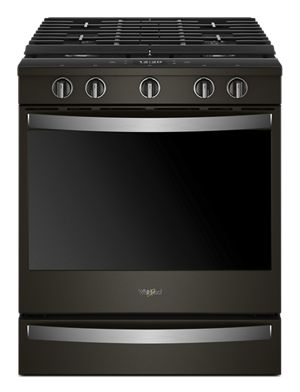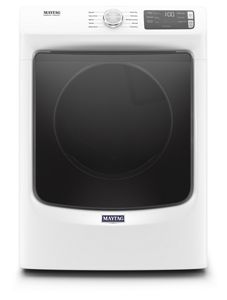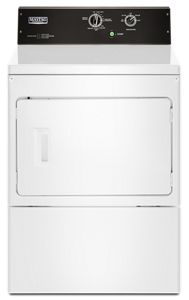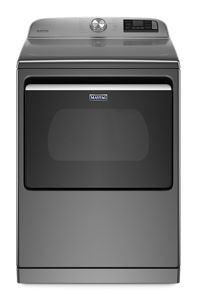
Food Processor vs Blender: What's The Difference?
Although food processors and blenders share some functions, they are not interchangeable. Primarily, a blender is used to puree or crush ice. Use a blender if your final product is something you can drink, such as a mocktail or protein shake, drizzle or dip. In addition to pureeing, a food processor can slice, grate, shred, dice and more. As a general rule, use a food processor if the outcome will be eaten with a fork or spoon.
Food Processor vs Blender Comparison Chart
Every blender and food processor is different and may include a range of varying accessories depending on the model. However, you can usually count on these factors when considering blenders vs food processors:
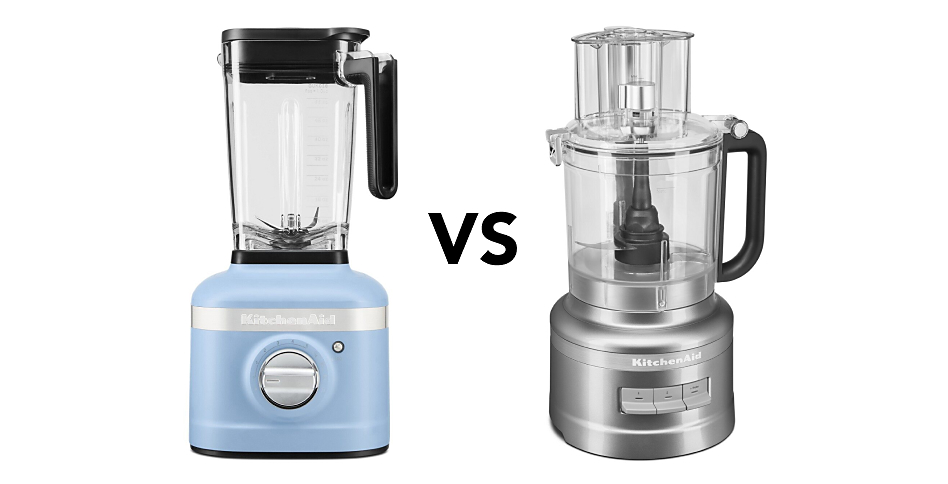

What can a blender vs food chopper do? |
|---|
|
|
Blender |
Food Processor |
|---|---|---|
| Slice, shred, chop | Blender | Food Processor |
| Crush ice | Blender | Food Processor |
| Finely puree or liquify | Blender | Food Processor |
WHAT DOES A BLENDER VS FOOD PROCESSOR HAVE? |
|---|
|
|
Blender |
Food Processor |
|---|---|---|
| Multiple blades and discs | Blender | Food Processor |
| Features a fixed blade | Blender | Food Processor |
| A tall jar great for pouring | Blender | Food Processor |
| A wide work bowl to process large or wide ingredients | Blender | Food Processor |
WHAT TO MAKE IN A BLENDER VS FOOD PROCESSOR |
|---|
|
|
Blender |
Food Processor |
|---|---|---|
| Best for liquid recipes or silky smooth results like coulis | Blender | Food Processor |
| Best for chunky results like riced cauliflower or tabbouleh | Blender | Food Processor |
| Great for pureed dips like hummus and smooth salsa | Blender | Food Processor |
| Great for emulsified dressings and condiments like aioli | Blender | Food Processor |
| Great for thicker or dry mixtures | Blender | Food Processor |
| Great for a whole range or recipes and tasks | Blender | Food Processor |
Read on for more detailed answers to your food processor vs blender questions and when you can use either for great results. This article will help you choose the best tool for the job while exploring new recipes and techniques.
What are the Differences Between a Food Processor and Blender?
Blenders usually have one blade, tall jars and are typically used for wetter recipes. Food processors, on the other hand, usually have multiple blades and wide work bowls and can usually shred and slice in addition to pureeing.
Read on for more details on the differences between a food processor and a blender.
1. Blades


BLENDERS HAVE FIXED BLADES
Traditional blenders usually feature one blade at the bottom of the jar that cannot be switched out. This blade can feature multiple points at various angles that help thoroughly blend ingredients. This single blade is perfect for crushing ice, finely pureeing and even liquifying ingredients.
Select KitchenAid® blenders feature a unique asymmetric blade that blends at four distinct angles to pull ice into the center and power through the toughest ingredients.


FOOD PROCESSORS HAVE MULTIPLE DISCS OR BLADES
Many food processors come with multiple blades and/or discs. The blades are used to puree, chop, mix and sometimes knead in the work bowl. Some food processors also come with a whisk accessory that allows you to whisk, whip and stir. In-bowl blades and accessories usually slide over a drive adaptor and a drive pin at the bottom of the bowl. Food processor discs sit at the top of the work bowl, below the feed tube and allow you to slice, shred and sometimes dice as ingredients are pushed into the disc through the feed tube.
2. Work Bowls vs Jars


BLENDERS HAVE TALL JARS
A blender jar’s tall sides help contain liquid recipes as they blend. The height and shape also help keep ingredients circulating throughout the jar and blades for even blending. The pitcher-like jar usually features a handle and pouring lip or beveled edges, perfect for transferring liquid ingredients.
Select KitchenAid® blenders feature a ribbed jar design that folds content back into the blade to create a powerful blending vortex.


FOOD PROCESSORS HAVE WIDE WORK BOWLS
Food processors feature wide, flat blades and discs to achieve specific cuts like slices or shreds. A wider work bowl gives the appliance space to process whole or larger ingredients like sweet potatoes, mashed potatoes, cucumbers, or graham crackers for graham cracker crust. Larger food processor bowls also provide more capacity for large batches.
Select KitchenAid® food processors feature a sealed, leak-resistant work bowl with rounded corners and smooth surfaces so less food gets trapped in the bowl and lid for easy cleanup.
Sizes and Capacity
The typical capacity of a food processor runs from 6 to 14 cups and can sometimes be even larger. Blenders start at a smaller range of 2 cups for a personal blender and can go up to around 14 cups for large commercial models. Choose a blender or food processor with a size that works best for your lifestyle.
Similarities Between a Food Processor and Blender
The setup for blenders vs food processors is actually quite similar. In most cases, both blenders and food processors feature a motor housed in a base. The container that holds your ingredients—a jar or work bowl—sits on top of this motor base and contains blades or discs that process or blend your food. You can use the appliances interchangeably for some recipes, though each one has certain tasks it handles better than the other.


What to Make in a Blender
Blenders are best used for liquid recipes or silky smooth results. The blender’s jar is tall and narrow, creating a vortex that draws ingredients downward toward the blades. Some blenders provide higher power compared to food processors. This enables faster blade rotation, breaking down tough ingredients for smoother results. Get tips and tricks on how to use a blender for a range of recipes.
Take a look at some common ingredients and recipes that work best with a blender.
Wet ingredients: In general, if your recipe calls for ingredients that are mostly liquid or soft—like a smoothie, Sriracha sauce or a pureed soup—a blender will be your best bet. In addition, if you are making something that you can drink or eat without chewing, use a blender instead of a food processor.
Frothed milk or creamy horchata: If you are looking to warm and froth milk for your coffee, tea or cocoa, or to blend rice milk and spices for horchata, use your blender. The friction from the blades will warm the milk, and the aeration from the spinning blades and downward draw will create delightful bubbles and some light foam.
Puddings, custards, & mousse: You’ll master this smooth and fluffy texture when you use your blender to mix ingredients for these. Create a classic chocolate mousse, make a refreshing lemon mousse or put a new twist on a fruit-filled favorite with pear clafouti.
Soups, sauces & bisques: When you want to make a creamy tomato soup, a smooth lobster bisque or a unique spiced cantaloupe gazpacho, use your blender for silky smooth results. Try the KitchenAid® ProLine® Blender with Thermal Control Jar to heat and maintain the temperature of your soups and warm sauces. Consistently mixing a Hollandaise that won’t break is easy in your blender and will make you the hero of your weekend brunch. There’s a variety of sauce recipes to make in a blender, which makes it a great tool to explore new culinary creations.
Applesauce & fruit blends: A blender makes quick work of homemade applesauce and chutney. Add in cinnamon, berries, strawberries, carrots, or mango chunks for a pureed fruit blend that’s all your own.
Frozen drinks: If frappéed frozen coffee drinks or frozen cocktails such as watermelon sangria, daiquiris, or frozen coconut margaritas are on the menu, a blender is your go-to appliance. For frozen ingredients, opt for a blender featuring an ice-crush setting, such as the KitchenAid® K150 Blender.


Nut milks and flours: Make your own gluten-free flour by grinding almonds in your high-powered blender or try soaking and blending raw almonds or cashews for delicious and nutritious homemade nut milks.
Nut butters: Make your own peanut, almond, cashew, or sunflower seed butters with a powerful blender. You’ll need to make the nut butter in smaller batches in a blender, and if you have a blender spatula or tamper, the job will be easier. You will need a powerful motor such as the KitchenAid® K400 or High Performance Series blenders to grind hard items like nuts.
Milkshakes: Blenders are ideal for these frozen confections, as well as for making a delicious homemade whipped cream for topping. By adding different ingredients and controlling the amount of milk, you can create frothy shakes to drink through a straw or thicker blends with chunks of fruit, cookies or candy that you eat with a spoon. A simple immersion blender is optimal for single servings, or use your countertop blender for more than one portion.
Coconut oil: Put a bag of unsweetened coconut flakes in your blender and in a few minutes you’ll have creamy coconut oil to cook with. No additives or preservatives!
Confectioners sugar: With granulated sugar and a little cornstarch, you can make fresh baker’s or confectioner’s sugar. If you’re the middle of a recipe and realize you’re out of powdered sugar, you can create some in minutes and carry on with your cooking.
Crushing ice: Feel like pouring your lemonade or iced tea over crushed ice? Your high-powered blender is up to the job.
Smoothies & protein shakes: Of course, if you’re a smoothie fanatic who loves to play with different flavors and textures, a blender will bring out the best of your fusions. If you’re making smoothies that contain fibrous ingredients like kale or frozen fruits, a heavy-duty blender, such as the KitchenAid® K400 or a High Performance Series blender, will help you power through these tough ingredients with added ease.
Smooth baby food: Use your blender to puree roasted vegetables or fresh fruits for your little one just learning to eat new foods. A blender will let you create smooth flavor creations and help baby learn to love fresh and healthy ingredients. And, you can be in full control of the type and quality of ingredients when you make it yourself. Select KitchenAid® blenders are compatible with a small batch jar so you can also make just a serving or two for ultra-fresh baby food.
Smooth salsa: If you’re looking to make your salsa a blended liquid, a blender will create a smoother, more liquid texture.
Shop KitchenAid® Blenders

What to Make in a Food Processor
Food processors are best used for chunky results, as the blades rotate slower than a blender. The larger s-shaped blades produce precise cuts at slower speeds.
Food processors have several blades to perform a variety of tasks. The feeder tube allows you to add a little at once and to push or tamp the ingredients toward the blades. Learn more about how to use a food processor and what food processor to buy to create a range of recipes.
Take a look at some common ingredients and recipes that work best with a food processor.
Dry ingredients: Food processors can chop, slice or grate ingredients without adding any liquid.
Bread crumbs: Dried or day-old bread can be ground coarsely or finely in seconds. Try adding herbs for a custom blend.
Dough: Many food processors such as the KitchenAid® 7-Cup Food Processor Plus come with a specialized dough blade to knead without adding heat. Use the pulse setting and do not overdo it. Over-kneaded dough will have tough gluten strands and will not rise well.
Shredding cheeses: Use the shredding disc to get freshly shredded cheese for sauces and casseroles in minutes. Fresh cheese melts better and has more flavor than pre-shredded in the store.
Shredding veggies: The shredding disc can also be used to shred a range of vegetables like brussel sprouts or lettuce for salads, hash brown potatoes and also works great for creating mounds of coleslaw.


Chopping, dicing, or slicing vegetables: Use the multi-purpose blade to quickly chop or mince onions, peppers, carrots, celery and more. Switch to the slicing disc to make sliced cucumbers, carrots, cheese or charcuterie. Get perfect slices for a sweet and savory vanilla bean sweet potato gratin. Although a blender can technically chop vegetables in small batches, it will create more liquid as it performs, which changes the consistency and presentation of your vegetables. Chopping progress is harder to monitor due to a much higher blade speed (even on low settings) which processes very quickly. However, if you have this immersion blender with a food chopper attachment from KitchenAid, you can use the attachment to handle chopping vegetables. However, food processors with slicing disc blades can create slices.
Pesto, pâté & tapenades: A food processor will allow you to make quick pesto sauces, pâtés or olive tapenades. Quickly bring together roasted garlic, spinach, lemon and cashews for a versatile spread or topping. You control how large the pieces are in your sauce or spread to get a mixed texture you prefer. You can also use a food processor to make creamy homemade peanut butter.


Riced cauliflower or other vegetables: Ricing vegetables is an easy way to reduce carbs in your diet, or add versatility to your recipe. The food processor’s sharp blades finely chop florets for easy riced cauliflower or a broccoli-cauliflower blend, plus you can chop to your preferred size.
Mincing meat: If you don’t have a standalone meat grinder or the food grinder attachment for your KitchenAid® stand mixer, you can simulate grinding by mincing your choice of meats in your food processor. Use quick pulses until the meat is the texture you prefer. You cannot mince meat in a blender as the raw cuts will get wrapped around the blender blades.
Baby food: Help slowly introduce young ones to more solid foods when you prepare fresh fruits, veggies and more with your food processor. You can pulse ingredients to achieve chunkier results as you transition from smooth purees to sliced carrots and so much more.
Salsa: If you’re looking to make a chunky salsa, use your food processor. But if your salsa or sauce will be a blended, smooth liquid, either your blender or your food processor can create a pureed mixture of vegetables, herbs and spices. Either appliance will successfully blend chickpeas, olive oil, tahini and garlic.
Shop KitchenAid® Food Processors
KitchenAid® Blender and Food Processor Options for All Your Culinary Creations
A blender and a food processor each allow you to explore new recipes, tastes and textures with added ease. Each one offers specialized features that make them the best choice for certain tasks. Having the right small appliance to optimize your making is critical to bringing your recipes to reality. Want to learn more? Get our tips and tricks for the best ways to use a food processor or let us help you choose the best blender for your kitchen. You can also learn more about the difference between an immersion blender and food processor, so you can shop confidently for the recipes you want to create.
.png?fit=constrain&fmt=jpg&wid=2875)
GET MORE WITH A KITCHENAID ACCOUNT
Sign in to unlock special savings
Get Some Help Finding the Perfect Kitchen Gift
-
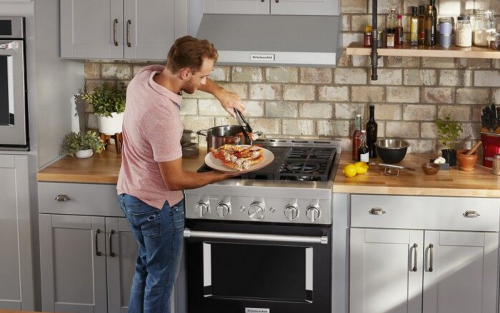 Small Appliance Gift Ideas for Busy New Parents Find the perfect gift for a new parent—or a busy one—with this guide that’s full of useful kitchen gift ideas.
Small Appliance Gift Ideas for Busy New Parents Find the perfect gift for a new parent—or a busy one—with this guide that’s full of useful kitchen gift ideas. -
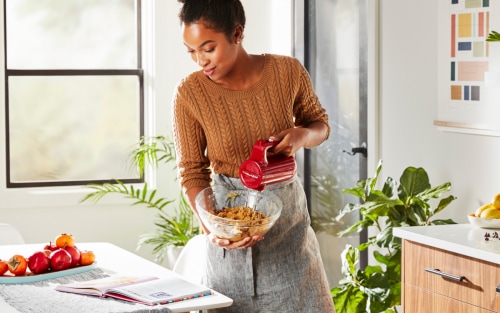 Gifts for Bakers in 2022 Stand mixers, mixing bowls and countertop appliances are great gift ideas for bakers. Explore essential and unique baking gifts that all bakers will love.
Gifts for Bakers in 2022 Stand mixers, mixing bowls and countertop appliances are great gift ideas for bakers. Explore essential and unique baking gifts that all bakers will love. -
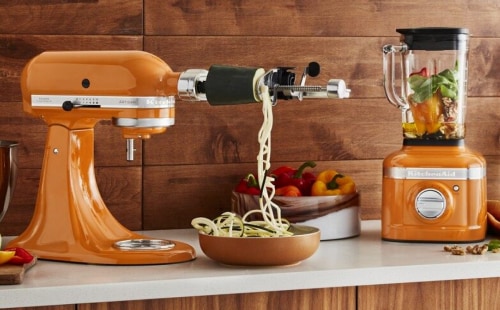 Kitchen Wedding Gifts For Newlyweds What are the best kitchen wedding gifts? Our guide can help you explore great kitchen wedding gift ideas for all the happy couple’s new creative kitchen endeavors.
Kitchen Wedding Gifts For Newlyweds What are the best kitchen wedding gifts? Our guide can help you explore great kitchen wedding gift ideas for all the happy couple’s new creative kitchen endeavors.
